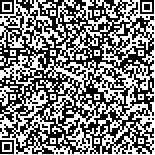| 引用本文: | 史亚,赵红霞,刘程智,陈欢.中药饮片中微生物的快速检测技术研究及风险评估方法初探[J].中国现代应用药学,2019,36(4):461-465. |
| SHI Ya,ZHAO Hongxia,LIU Chengzhi,CHEN Huan.Study on Microorganism Rapid Detection Technology and Risk Assessment of Chinese Herbal Medicines[J].Chin J Mod Appl Pharm(中国现代应用药学),2019,36(4):461-465. |
|
| 本文已被:浏览 2252次 下载 1256次 |

码上扫一扫! |
|
|
| 中药饮片中微生物的快速检测技术研究及风险评估方法初探 |
|
史亚1,2, 赵红霞1,2, 刘程智1,2, 陈欢1,2
|
|
1.浙江省微生物技术与生物信息学研究重点实验室, 杭州 310012;2.浙江天科高新技术发展有限公司, 杭州 310012
|
|
| 摘要: |
| 目的 考察11种常用中药饮片微生物携带状况,评估安全风险,初步建立饮片微生物数据库。方法 采用基因芯片方法,检测白芍等11种常用中药饮片中所携带的细菌、真菌和病毒,统计其微生物种类组成。结果 11种饮片共检测到涵盖细菌、真菌、病毒三大类的174个微生物鉴定结果,其中细菌占75.29%。通过整理和分析174株微生物信息,初步建立了饮片污染微生物数据库。饮片中沙门菌和耶尔森菌的检出率均为45.45%(5/11),志贺菌36.36%(4/11)。多个样本检出条件致病菌,如肺炎克雷伯菌检出率为63.63%(7/11),大肠埃希菌和阴沟肠杆菌为45.45%(5/11),铜绿假单胞菌9.09%(1/11)。结论 中药饮片中存在微生物污染情况,需要开展更深入的风险评估工作,完善中药饮片微生物数据库信息,保障中药饮片的用药安全。 |
| 关键词: 中药饮片 微生物污染数据库 风险评估 |
| DOI:10.13748/j.cnki.issn1007-7693.2019.04.016 |
| 分类号:R917 |
| 基金项目:浙江省分析测试类项目(2018C37007);浙江省国际科技合作高技术产业联合研发项目(2015C54004) |
|
| Study on Microorganism Rapid Detection Technology and Risk Assessment of Chinese Herbal Medicines |
|
SHI Ya1,2, ZHAO Hongxia1,2, LIU Chengzhi1,2, CHEN Huan1,2
|
|
1.Key Laboratory of Microbial Technology and Bioinformatics of Zhejiang Province, Hangzhou 310012, China;2.Zhejiang TianKe Hi-Tech Development Co., Ltd., Hangzhou 310012, China
|
| Abstract: |
| OBJECTIVE To investigate 11 kinds of Chinese herbal medicine(CHM) microorganism contamination and assess potential risk, and establish the microorganism database of Chinese herbal medicine. METHODS The gene microarray technology was used to describe microbiome communities in 11 kinds of Chinese herbal medicines. RESULTS A total of 174 species of microorganism were identified, which consisted of bacteria, fungi, and virus. Bacteria was the most dominant fraction, which accounted for 75.29% of total microorganism. The microorganism database of CHM was initially established by sorting and analyzing of the detection results of 174 species of microorganisms. The detection rate for Salmonella enterica, Yersinia spp., and Shigella spp. were 45.45% (5/11), 45.45% (5/11), and 36.36% (4/11), respectively. Several opportunistic pathogenic bacteria, such as Klebsiella pneumoniae, Escherichia coli, Enterobacter cloacae and Pseudomonas aeruginosa were also detected. The detection rates were 63.63%(7/11), 45.45%(5/11), 45.45%(5/11), and 9.09%(1/11), respectively. CONCLUSION This study shows that CHM is contaminated by some microorganisms. Further research on risk assessment and microorganism database of CHM should be carried out to provide traceability analysis of pathogens so as to ensure the safety and efficacy of CHM. |
| Key words: Chinese herbal medicine microbial contamination database risk assessment |
